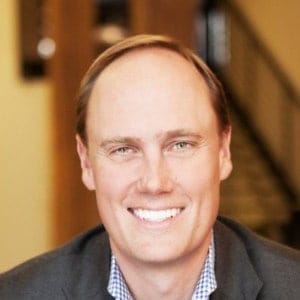The year ahead in travel will prove to be an exciting one, as multi-screen and technological advances continue to shape and influence how we plan our holidays and travelling arrangements.
“The Year of Mobile” is really the “Year of Multi-Screen”
For more than a decade, travel industry pundits have incorrectly been predicting the year of mobile. But they have largely missed the point: Focusing on the mobile device alone is tantamount to tunnel vision. People are interacting with and consuming diverse content on a variety of devices: phones, tablets, laptops, internet connected TVs. How does the modern travel marketer influence the traveler when there are this many touch points?
The real opportunity for mobile (assuming you can determine cross-device identity) is the ability to continue the conversation with a prospective customer. Understanding how to reach consumers across multiple screens is much more exciting than just optimising creative for a very, very small screen.
Big data kills the last click
The current “last click” model is increasingly under scrutiny for its assumption that online booking is a simple, linear process: See ad, click ad, visit site, book ticket. The reality is that a customer’s online journey is far more complex than this – often influenced by dozens of touch points along the path to purchase. By analysing a customer’s entire sequence of events prior to conversion, it’s entirely possible – with the help of big data tools – to apportion credit between channels, tactics and campaigns in an effort to optimise ROI.
Online marketing is measurable and the easiest form of measurement is the click. But just because last click is easy doesn’t mean it’s the right – or even the best – measuring stick. Industry analysts have shown over and again that clickers are aspirational. What brands want are not clickers but bookers. Ultimately, when planning your campaigns, you should not be optimizing to a click, but to those with highest propensity to convert.
The sharing economy goes local
The revolution of travel started with the likes of VRBO, but the ‘sharing economy’ really started to transform and take shape thanks to the likes of Airbnb and Uber. Next up is a wave of peer-to-peer applications and services that cater to more niche needs, like renting or borrowing baby strollers and cribs; eating or taking cooking lessons with local chefs; renting sports equipment like bikes and surfboards from owners in town; or, for business travellers, renting meeting spaces by the hour.
All these collaborative consumption models (and many others like them) take the inconvenience out of travel and allow users to experience their destinations in a more authentic manner, while giving established institutions a run for their money.
Drones and wearables are freshening up the travel experience
Drones are making all the headlines at the Consumer Electronic Show (CES) this year, but they’ve already been making a play in our industry, allowing for some exquisite travel videos and giving new meaning to “vicarious travel.” Beyond better visuals, the implications of the consumer drone for the travel industry are still unclear, but in 2015, keep an eye out for what happens when drones meet virtual reality devices like Oculus Rift.
Wearables are in the picture as well. We’re already doing a great deal of travel-related tasks on our mobile phones, but devices like the Apple Watch will take it to the next level with capabilities like one-tap flight check-ins and even the ability to unlock hotel rooms (Starwood Hotels is developing an app for the Apple Watch that will do just that). Some early-adopter airlines – like airberlin and Iberia – aren’t even waiting for the Apple Watch having already introduced apps for smartwatch boarding passes which can be used on the Pebble and other wearables.

